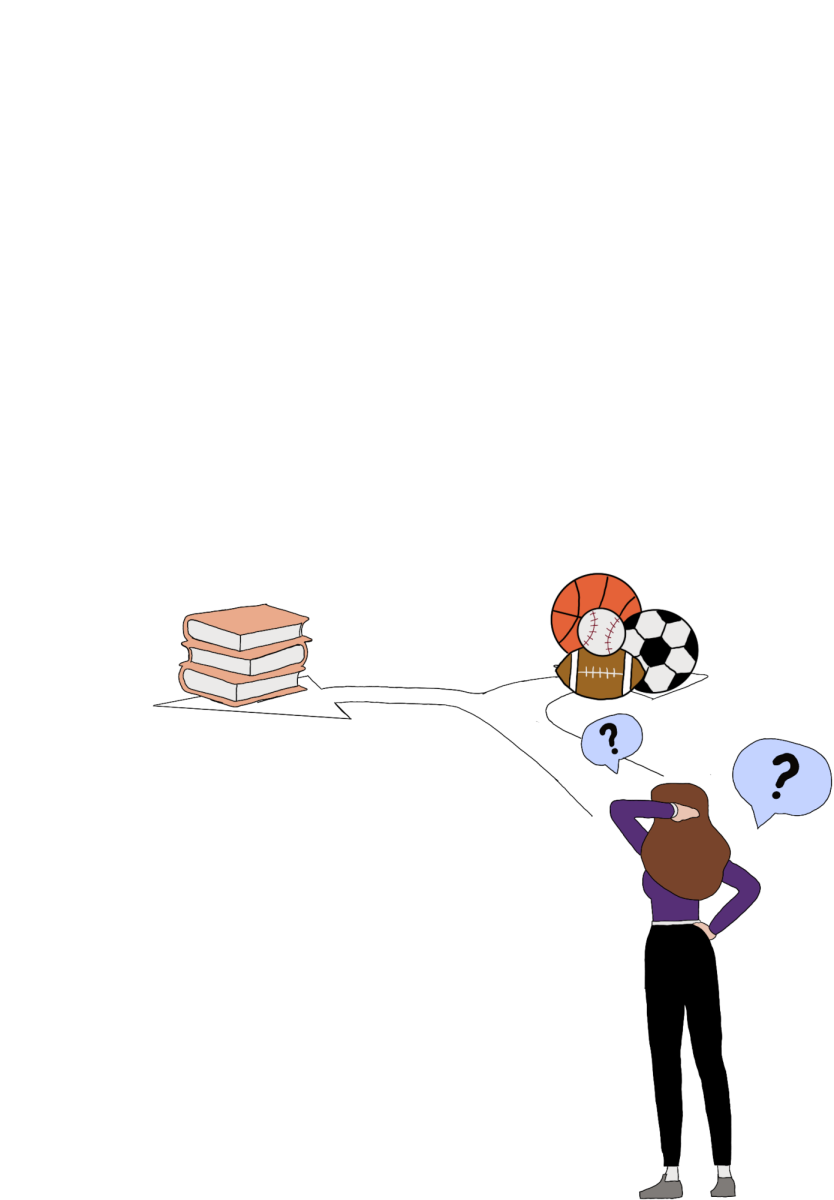Many student-athletes play sports at a competitive level in high school but don’t commit to playing collegiate sports. This could be due to a number of factors that play into this decision: rigorous recruiting process, prioritizing academics, injuries, and even burnout. It’s tough to say goodbye to a sport after years of dedication, but for many, there’s no other option but to choose a different pathway.
Athletes need to make a sacrifice when choosing between playing college sports and focusing on academics.
“It’s important to look at that balance and say, do I want to be an athlete who goes to college or do I want to be a student who goes to college?” Athletic Director Melissa Schmidt said.
Student-athletes have to worry about the future of balancing their college work with a collegiate practice schedule. However, they also have to manage their high school workload in the present day. Along with ACT or SAT prep, academics, and extracurriculars, students also have to focus on the rigorous recruitment process.
“It was a really long, gruesome process, balancing high school work, my training schedule and regular work is a lot and doing that collegiately is even harder. I feel sometimes [student-athletes] want to keep loving the sport, but how much effort it takes, kind of makes you hate the sport in a sense,” Appalachian State track and field commit Abby Goetz said.
Some students receive offers from schools that don’t fit their preferences and priorities of what they are looking for in a college.
“I didn’t get the offers that I wanted from the schools I wanted. They mostly just didn’t have anything I wanted to study. So I would rather walk on or just not play at all,” Senior Max Stallings said.
Many student-athletes don’t know how to manage all of these steps and don’t have the resources to reach out for help. Time isn’t the only deciding factor in the process.
“When you think about some of the bigger sports like soccer, to be in the D1 recruiting scene you need access to the right [club] teams and that access typically requires a lot of money … I think that the kids who aren’t on those teams have to put in a lot of time, cutting film and marketing themselves,” Schmidt said.
Students eventually need to choose the best pathway for them. Many athletes want to play in college but this is not feasible for everyone due to the level of play needed for college sports.
“A lot of guys that I know from the past three years have tried to be recruited out of high school. Some have and some of them are at junior colleges now and some are still trying but it’s just a hard process. They’re all struggling with it because there’s so much competition around the country for all these schools,” Stallings said.
Additionally, there are some external factors that have stopped many athletes from playing in college.
“I feel like a lot of kids have that dream to play in college and be really good. Then in high school, especially around COVID I kind of gave up on that idea,” senior Meghan Kadlec said.
There is no easy pathway to take and whether students decide to play or not, it takes hours and hours of investment. It’s hard to process never playing the sport you’ve loved for the longest time again.
“It’s sad that this is my last year [playing] if you think about it. I have to do my best for this last year and hope it all goes well. I’m just trying to make as many memories with my teammates as I can, especially if this last time I’m playing in a competitive environment,” Stallings said.


